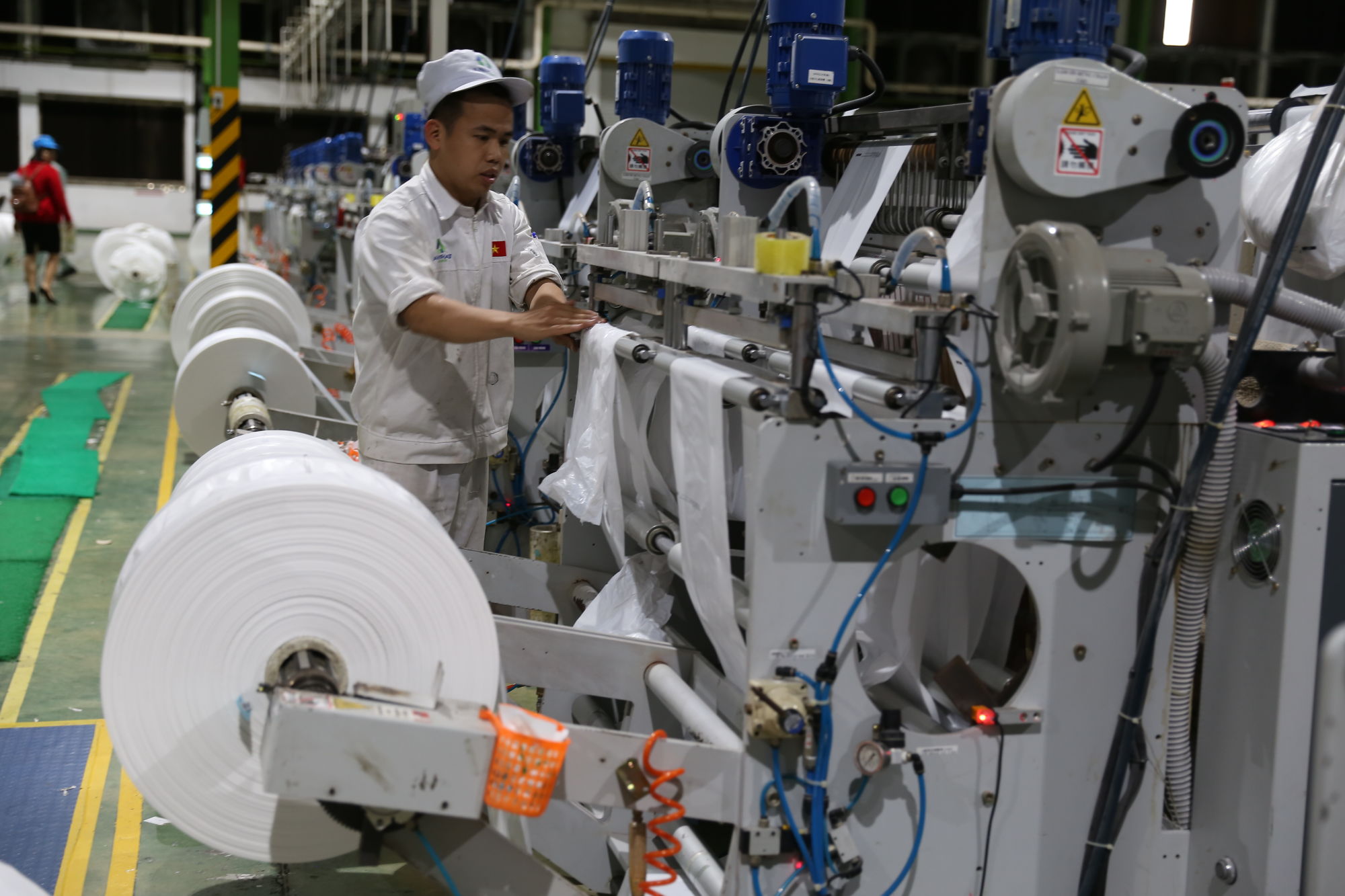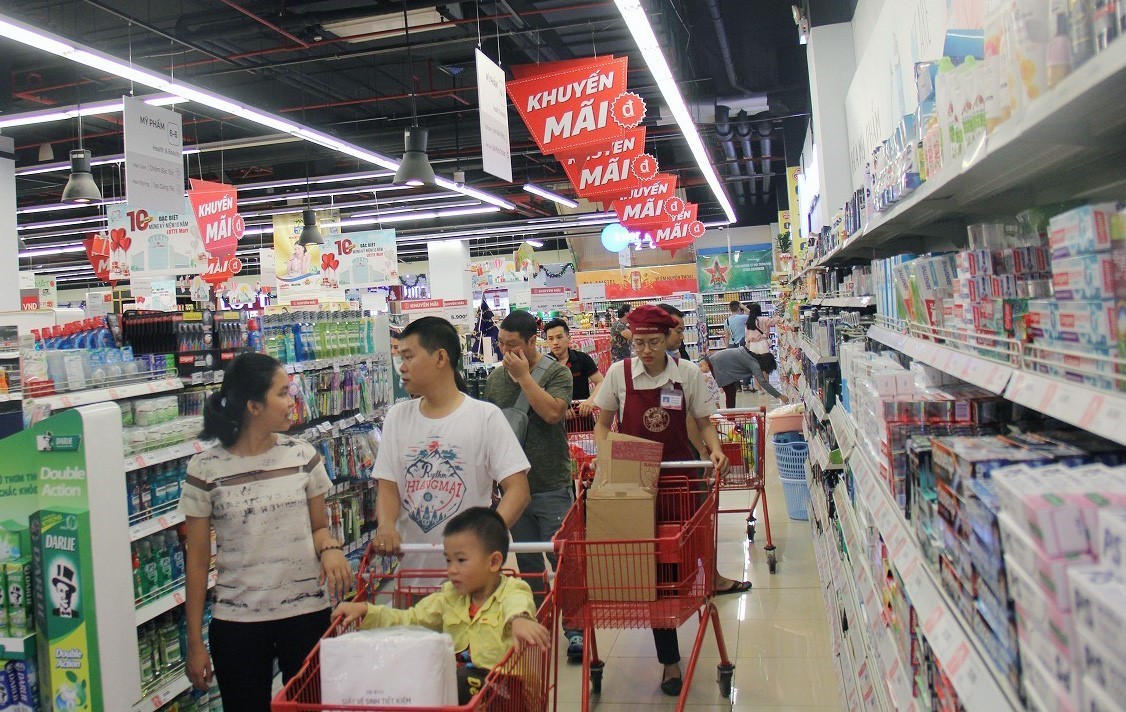The adjustment of the prices of two necessities – petrol and power in the first months of 2019 pushed the production and service costs up. This makes many enterprises work harder to fulfill their financial targets.
Goods prices increase
Since the beginning of the year, the domestic petrol prices have been adjusted in upturn direction for many times. Most recently on May 2, the price of E5 RON92 petrol rose 985 VND per litre, while that of RON95-III also increased 956 VND per litre although the price stabilization fund has paid 283-925 VND for per litre. Since the end of April, the price of RON95-III has risen by 3,600 VND per litre and that of E5 RON92 has been up by 3,465 VND per litre, while prices of other kinds of petrol has also increased from 1,200-2,400 VND per litre.
Meanwhile, the price of electricity has also risen by 8.36 percent from March 20, strongly affecting businesses after only one month.
Transport firms are the first to be influenced due to an increase of 35-40 percent in transport cost.
Vice President of the Hanoi Taxi Association Nguyen Hoang Minh said that the third consecutive petrol hike since the beginning of April has pushed enterprises’ cost up considerably. This has forced many enterprises to raise their transport fees to deal with a possible drop of 40 percent in profit.
Strong rise of petrol prices has led to an increase of a hundred of thousands of VND in transport fee for each batch of vegetables from the wholesale markets to retail ones, resulting in higher prices of goods.
“With petrol price hike, many firms said they will suffer losses if they still try to remain competitive,” stated Minh.
In the market, many kinds of goods with transport costs included in their total prices have seen changes. Nguyen Thi Ha, a trader at Hang Da market in Hanoi’s HoanKiem district said that petrol price hike added nearly a hundred of thousands of VND to the cost for transport of goods from wholesale to retail markets. Therefore, the traders must increase the goods prices.

“Alongside, wholesalers also asked for higher goods prices to make up transport costs,” said Ha.
Pressure on profit
For the production sector, pressure from rise in prices of necessities like power and petrol is stronger than trading businesses. Many have strengthened measures to manage and cut down costs to deal with the rising prices of input materials.
Orders are often signed beforehand and although businesses have prepared alternative plans, with the sudden and strong price hike as recently, the cost will surge while the re-negotiation of contracts with partners is not simple.
Pha Thi Thanh Xuan, Vice President and General Secretary of the Vietnam Leather, Footwear and Handbag Association, said that electricity and petrol are two kinds of necessities that have the greatest impacts on businesses’ profit.
In reality, orders are often signed beforehand and although businesses have prepared alternative plans, with the sudden and strong price hike as recently, the cost will surge while the re-negotiation of contracts with partners is not simple. Therefore, the solution is cutting down unnecessary costs and seeking alternative materials with better prices to make up the rise in input costs.
With firms the garment and textile sector, especially fibre production, the impacts are great.

Cao Huu Hieu, CEO of the Vietnam National Textile and Garment Group, said that electricity price is part of the cost of business in the sector, thus when its price rises, the profit of firms are obviously down.
“However, businesses cannot share the difficulties with customers, especially amidst the current fierce competition in gaining orders,” said Hieu.
He noted that in the recent three years, prices of orders from major markets such as the US and the EU have continuously been falling.
“In the recent five years, the Chinese garment and textile sector has lost many orders and market shares to other countries due to high labour and energy costs. This showed that the rise in electricity prices not only affects businesses in profit but also reduces their competitiveness in the garment and textile map of the world compared to their rivals,” said Hieu.
Impacts on consumer price index
According to the General Statistics Office, the consumer price index (CPI) in April rose 0.31 percent over the previous month and 1 percent compared to December 2018. During the month, nine out of 11 goods group saw a rise in prices. Specifically, transport price saw the highest increase of 4.29 percent, mostly due to two times of petrol price adjustments which added 0.41 percent to general CPI increase.
In reality, petrol and electricity price hikes will lead to an increase in the majority of consumer goods and form a new price platform.
Many economists held that the world petrol price will continue to develop complicatedly in the next months, which, combining with the rise in electricity price, will affect the control of inflation in 2019. Therefore, they asserted that the price management must be more careful.
In the first quarter of this year, the Vietnamese economy grew 6.79 percent, lower than the record of 7.45 percent made in 2018. The numbers of newly-established businesses and new jobs were modest compared to the fourth quarter of 2018, but the number of firms halting their operation in the first quarter was exceptionally high, especially in January with 23,082 companies, the highest number in 10 years.
Amidst the US-China trade tensions and the protectionism as well as risks of the Chinese economy, the gloomy future of the Brexit process and conflicts inside the EU, the future of the Vietnamese economy becomes more unstable.

Indications also showed that industrial production also saw signs of stagnation. The industrial production index only expanded 9.2 percent, while the sector’s consumption index rose 8 percent and inventory increased 15.6 percent.
According to Associate Prof. Dr. Pham TheAnh from the National Economics University, the downturn in production and consumption and the upturn in inventory showed the risk of stagnancy in production in the first quarter.
Anh forecast that the economy will face risks as the rise of 8.36 percent in electricity price may push the CPI up by 3.3 percent per year. Inflation in the first quarter, although at a moderate level, will rise amidst the recent increase in petrol and electricity price adjustments. Impacts of the hike to the domestic prices may prolongto many months later.
“The target of 6.6-6.8 percent economic growth set by the National Assembly is still feasible. However, amidst the US-China trade tensions, the protectionism as well as risks of the Chinese economy, the gloomy future of the Brexit process, conflictsinside the EU and the unpredictable policies from US President Donald Trump, the future of the Vietnamese economy becomes more unstable. The average inflation rate in the first quarter remained moderate, but impacts from the hike in prices of petrol and electricity to the CPI may maintain in two or six months. Therefore, to reach the goal of keeping inflation under 4 percent, the State Bank of Vietnam’s monetary policies must be careful,” stressed Anh.
Promoting transformation in production
Regarding the adjustment in electricity price, Deputy Minister of Industry and Trade Dang Hoang An said that the price was kept unchanged in 2018 to help realize the inflation target set by the NA.
However, the input costs for power production increased as coal and petrol prices hiked and gas exploitation hitthe ceiling. Therefore, the unchanged price of electricity caused difficulties for the power sector in 2019.
In addition, according to An, the El Nino phenomenon in 2019 has caused drought that affected the stocking of water and operation of hydropower plants.
“To ensure profit for the EVN and strengthen financial resources for power generation, the ministry has built a power retail price scenario for 2019 on the foundation of Decision 24/2017/QD-TTg on the mechanism for the adjustment of retail electricity price, and Decision 34/2017/QD-TTg on the average retail power price frame for the 2016-2020 period, as well as the business reality of the EVN,” said An.

From another view, many Vietnamese firms have still used backward technologies which consume much energy. Therefore, the adjustment in power price is one of the motivations for them to change their management methods, especially in energy consumption.
From another view, many Vietnamese firms have still used backward technologies which consume much energy. Therefore, the adjustment in power price is one of the motivations for them to change their management methods, especially in energy consumption.
Dr. Nguyen DinhCung from the Central Institute for Economic Management agreed on the rise in power price, as he held that in a long time the price did not see any changes.
At the same time, the maintenance of a low price that makes enterprises unprofitable will hinder the attraction of investors to the sector.
“Now and in the future, the EVN will not be the major power producer, but focus on the transmission and distribution. Electricity generation will be transferred to other sectors or other businesses. Therefore, it is necessary to mobilize investment resources,” said Cung.
More importantly, he held that the adjustment of power prices will help encourage the saving of power and promote businesses’ transformation in production./.
